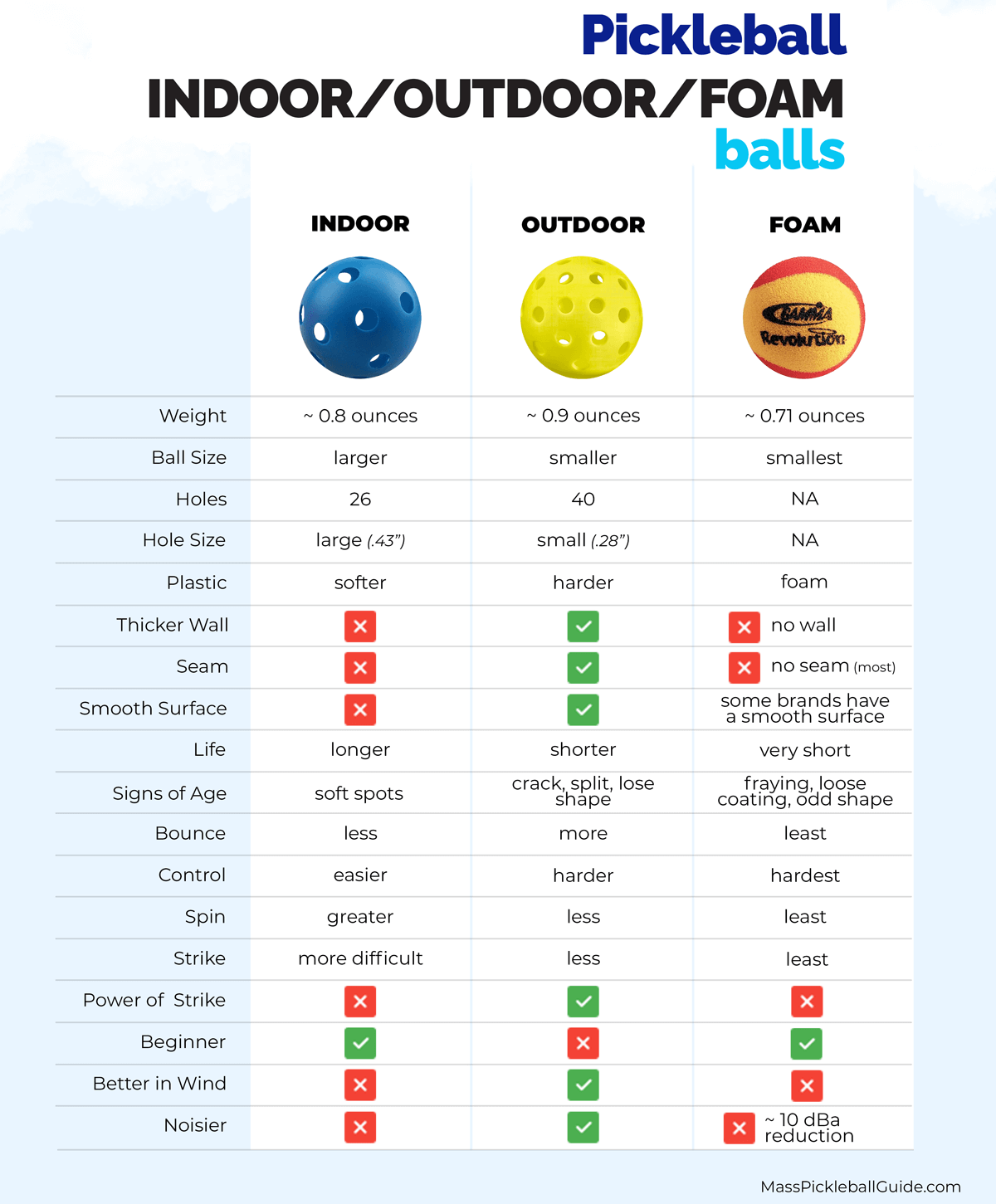Do indoor and outdoor pickleball balls really make a difference?
Pickleball ball color and type matter!
Pickleball, like many sports, can be enjoyed both indoors and outdoors. While the gameplay largely remains consistent across both settings, certain nuances demand a player’s attention. One such distinction lies in the choice of pickleball ball (or simply the pickleball) suitable for each environment. Recognizing the differences between indoor and outdoor pickleball balls is vital for anyone aiming to excel in both arenas. Whether a sudden downpour pushes players inside or crowded indoor courts push them out, a versatile player should be prepared. Dive in as we delve into what sets these balls apart.
[See also: How to Choose a Pickleball Paddle for Beginners]
Pickleball Ball Variations
There are two major varieties of pickleballs, indoor pickleballs and outdoor pickleballs, as you may have guessed by now.
The differences between each one is remarkably clear, and every pickleball player should know the distinctions.

Outdoor Pickleball Balls
Outdoor pickleball balls are harder and of a heavier weight than indoor balls; they usually have 40 holes, weigh ~ .9 ounces and ever so slightly larger than the indoor balls.
They have a smoother plastic and come off your pickleball much faster and some beginners find them harder to control.
Because they are heavy, they are more wind resistant and the additional holes allow the wind to breeze on through. They have less drag and be hit hard and fast which means you do not one of these heading towards your face.

Balls used for outdoor pickleball play will not last as long due to the temperature variations (of the air and court); check them often for variations in the shape as well as any nicks or cracks. Most common reason you would would need to replace an outdoor ball would be if it cracks – not common for them wear out first.
Average life of an outdoor ball? Well, that depends on the type of play, temperature, pickleball court surface, how many games have been played. Very minimum would be several games and guessing the maximum would be about a dozen games. Make sure you have enough of the outdoor kind and get them is larger in larger quantities so you never run out.
Thinking ahead?
Many pickleball courts do not supply the balls meaning you will need to bring your own bucket (bag?) of balls.
Further, outdoor balls are not used in the winter and they also tend to be a bit noisier – one more result of their additional weight over the indoor balls.
Indoor Balls for Pickleball
Indoor pickleball balls are lighter (weighing about .8 ounces), smaller and softer than outdoor balls. They have 26 holes which are larger than the holes of the outdoor balls which means they have a lower bounce.
The indoor ball is easier to control giving players with less strength the ability to hit it making these balls the better choice for beginners.

Also, a softer pickleball means more bounce when hitting the ground.
It can be very subtle and sometimes go unnoticed but indoor pickleballs are usually more textured than the balls used outside – this usually means a greater spin. Many color options are available for indoor pickleball balls to liven up you indoor game.
Indoor pickleball balls are affected by the wind, of course, as they are lighter and with fewer holes (i.e., more drag); but you’re not going to get too much wind indoors!
Common Question: Does the color of the ball matter in pickleball?
No, the color of the pickleball ball does not matter.
But, the color of the pickleball must be a uniform color so no stripes or designs – but this should not be a concern as you would not find anything like that for sale anyway.
And the color of the ball needs to be easily seen against the backdrop of the court/size and surroundings such as the sky, walls in an indoor pickleball court, etc. This is why you really won’t see, for example, a blue ball being used outside at all. The color would most certainly match at least some of the court and the sunny sky in the background.
The most prevalent pickleball ball color outdoors is yellow followed by orange and white. Indoors you will see lots of white or blue.

Please see Confused about what color should your pickleball ball be? to help find your best color options.
Pickleball court colors are usually the most prevailing factor in choosing the ball color.
We highly recommended the ONIX Fuse G2 (with a 5-star rating) as it is three times as durable as just about any ball on the market. They respond consistently and are made with a proprietary seam welding so they resist splitting and cracking. Ask around – it’s a preferred vendor and ball.
Don’t try to save a couple of pennies and get inferior pickleballs – you will regret it very soon.

Summary
The type of ball you use for pickleball depends entirely up to the players. If all agree to use a bright blue indoor ball (with 26 holes) on a sunny (and windy!) day against a blue court then go nuts.
And besides, the choice of a ball will very rarely be a topic of discussion unless you’re in a tournament. Most often you will show up at the court, socialize for a bit then dive right into the pickleball game – seldom counting the holes or noticing the color!







